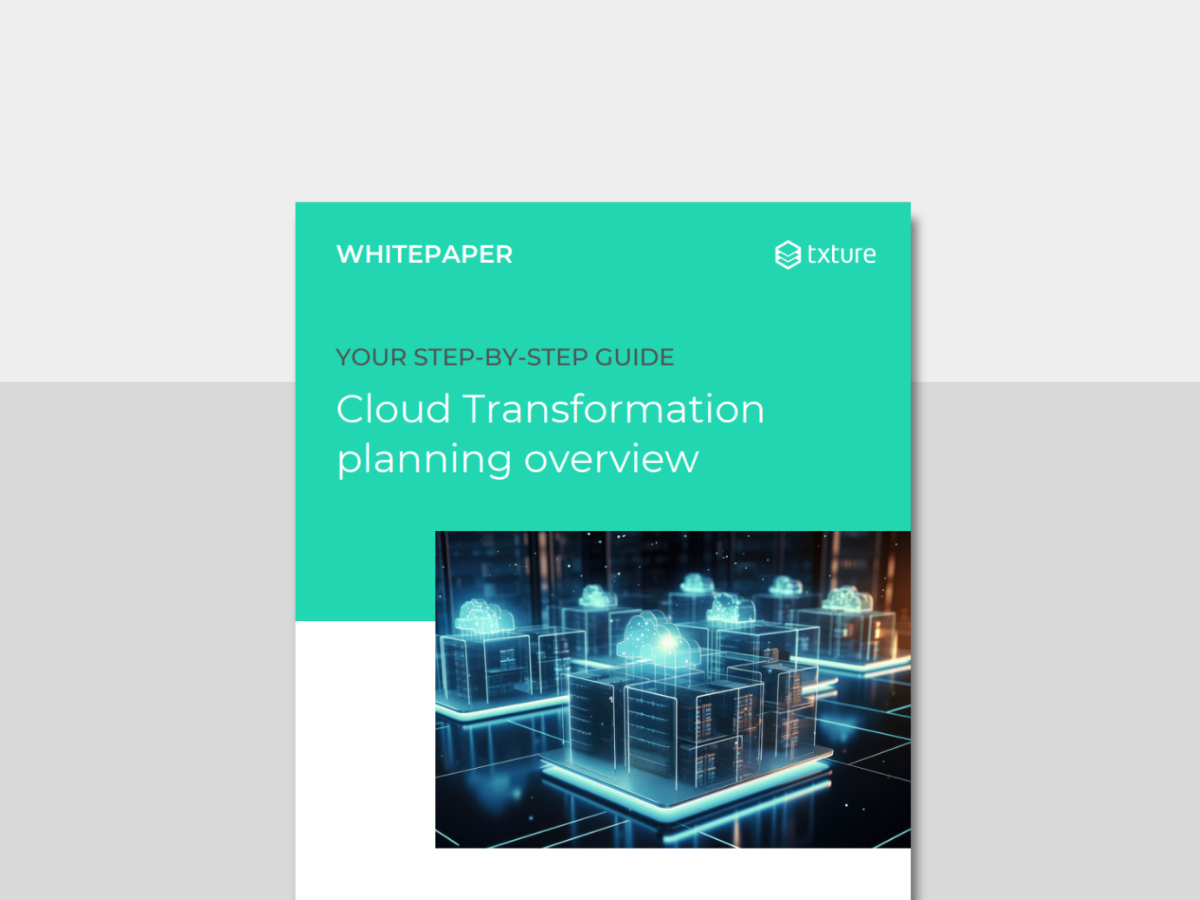How to better collaborate with all the stakeholders of your Cloud Transformation project

A cloud transformation project is like an old Russian novel: it generally involves a lot of characters. And without a bit of preparation at the beginning, you can easily get lost. In this article, we give you three best practices to efficiently collaborate with all the stakeholders of your cloud transformation project.
Cloud Transformation: The Challenge of Gathering Information
Moving to the cloud is great. It can help companies unlock new business opportunities, and achieve significant cost reductions through better agility and lowered maintenance. And these are just the most common benefits of a successful cloud transformation.
But before actually moving to cloud and experiencing the magic, you need to carry out a less exciting, yet necessary task: mapping all your existing business applications and defining how “cloud-ready” they are. To do so, you must collect detailed information about each application: its level of confidentiality, expected lifecycle, technical dependencies, etc.
In a perfect world, this data would be easily available. But in practice, even though part of the information is sometimes centralized in a common place like a CMDB, data collection is still a complex and time-consuming process.
In large organizations, the information you need is generally distributed between a lot of different people. Solution architects oversee their own group of applications and deployment stacks, while data engineers have knowledge of the different data sources. You must also consider all the non-technical stakeholders: for example, people with knowledge of business processes or regulatory requirements. This amounts to a large number of stakeholders and can make your journey to the cloud complicated.
To avoid that, it is critical that you implement best practices at the very beginning of your project. We will discuss three important ones in the following.
Do you need a clear overview of what your cloud transformation will look like? Download our step-by-step guide and succeed at every phase of your cloud transformation!

Step-by-step Guide: Cloud Transformation Planning
3 Tips to Facilitate Collaboration With All People Involved in Cloud Transformation
1 - Identify all stakeholders beforehand
It is not so easy to anticipate all the information you will need to assess your IT landscape. Therefore, we encourage you to conduct a stakeholder analysis at the beginning of your project.
What should the analysis include? We suggest that you consider the following stakeholders:
- Application owners, with architectural knowledge of the applications.
- Solution architects, with knowledge of the deployment stacks and infrastructure.
- Stakeholders with ownership and knowledge of how data is stored and siloed in the organization.
You should also list all the stakeholders on the business side, including:
- Top stakeholders, who are responsible for the overall cloud transformation of the organization. They are the people to whom you should report regularly on your migration progress.
- Key persons with knowledge of your regulatory requirements.
- Key persons with knowledge of your security architecture and requirements.
- The department or team using the application that will be moved to the cloud.
This analysis should help you identify all key stakeholders, their responsibilities in the organization, and the information they can provide throughout the migration process. It can be useful to create a responsibility assignment matrix (or RACI matrix) to clearly define the role of each stakeholder beforehand.
2 - Start by working with the application owners
When discovering your IT landscape, you can proceed in different ways. You can list your databases and servers first, and then explore the related applications. Or you can do the other way around.
Though each approach has its own advantages, we would recommend discovering the applications first, and therefore reaching the application owners in priority. Why? Because application owners have an interesting 360° viewpoint. They know what technical infrastructure (databases, virtual or physical servers) is necessary to run each application. But they also know which business processes are supported by the application, and how critical the application is for the different units of the organization. Last but not least, the application owners may also be able to tell you from whom you can get information about the application's IT infrastructure.
As someone leading a Cloud Transformation project, this is the vision you need. On the one hand, understanding the technical environment of the applications. On the other hand, knowing what this application represents for the business (be it from a risk, compliance, or business value perspective).
This approach can help you accelerate the discovery of the other IT assets, and facilitate the dependency mapping phase.
3 - Gather your data (and your stakeholders) in one place
It is not so easy to see the big picture when you receive input from so many stakeholders. If, over the course of the project, you end up using 25 different spreadsheets, you will likely have a hard time merging all the collected information. Instead, we advise you to choose, from the outset, one common tool that will act as the common workspace. There you will gather all the information and all the key stakeholders for the project. In doing so, you will keep constant track of which information is already known, which data is still missing, and who can help you fill the gaps.
Having a single workspace will also ease the reporting process. Over the course of the migration process, you will frequently need to communicate on the project status to internal and external stakeholders. With a central place where all the information is gathered, it will be easier to make informed recommendations and provide each stakeholder with the information they need.
Txture: Your Central Hub for End-to-End Cloud Transformation Management
At Txture, we created an end-to-end platform to help you manage all aspects of cloud transformation.
Txture Application Transformation COckpit is the central hub where:
- Information about your current IT infrastructure is automatically collected from all kinds of sources and organized in a central repository.
- All stakeholders can add valuable information and follow the migration progress.
- All migration preferences are defined beforehand (preferred cloud provider, regulatory requirements, highly critical applications, etc.).
- Up-to-date information about all main cloud providers and services is gathered, with detailed comparisons between services, features and costs, allowing you to make faster migration decisions with confidence.
- Information can be easily shared with all stakeholders through customized reports.
 Txture CT is the central hub for collaborating with all cloud transformation stakeholders
Txture CT is the central hub for collaborating with all cloud transformation stakeholders
Want to know how Txture brings more transparency and speed to your Cloud Transformation projects?
See for yourself how we help you accelerate the mapping of your existing IT landscape, and define the accurate migration strategy and best-suited cloud service for each of your applications.
Related posts
29.4.2025Application ModernizationDefine your scope for IT modernization2.3.2025
Cloud StrategySelecting the right cloud data center for hosting your workloads27.6.2024
Cloud optimizationA great driver to maximize cloud value: moving to instances with modern processors 24.5.2024
Cloud Knowledge5 best practices to manage change during a cloud transformation5.4.2024
Generative AIHow to welcome Generative AI into your existing tech ecosystem
